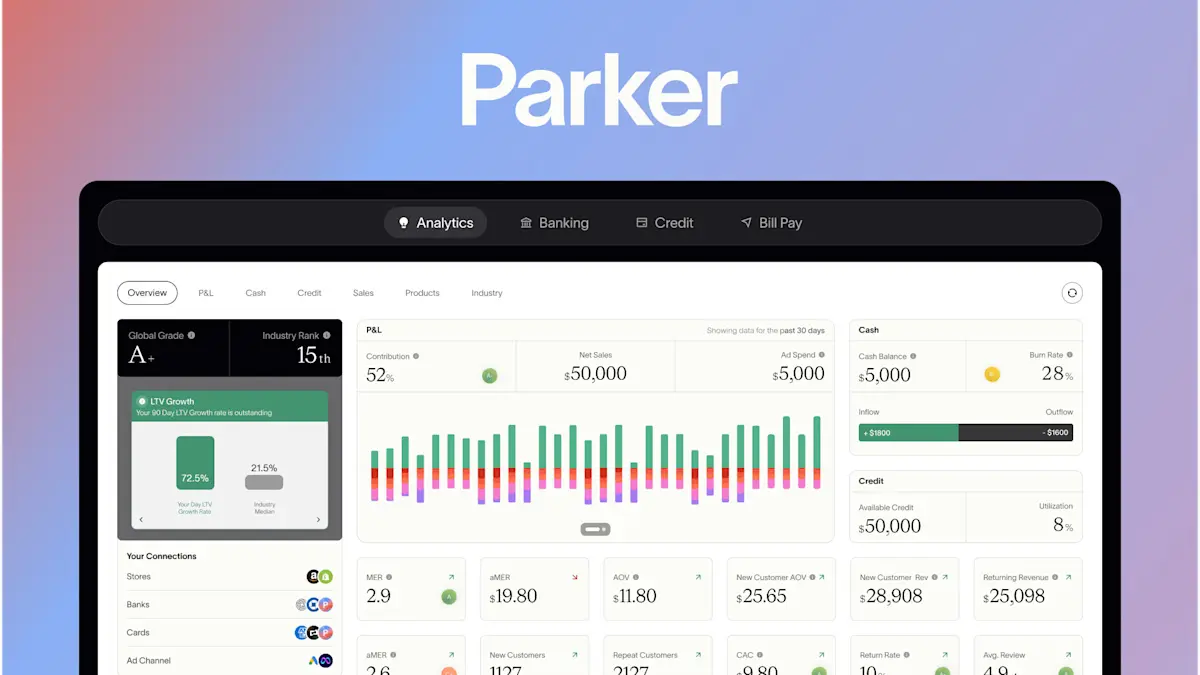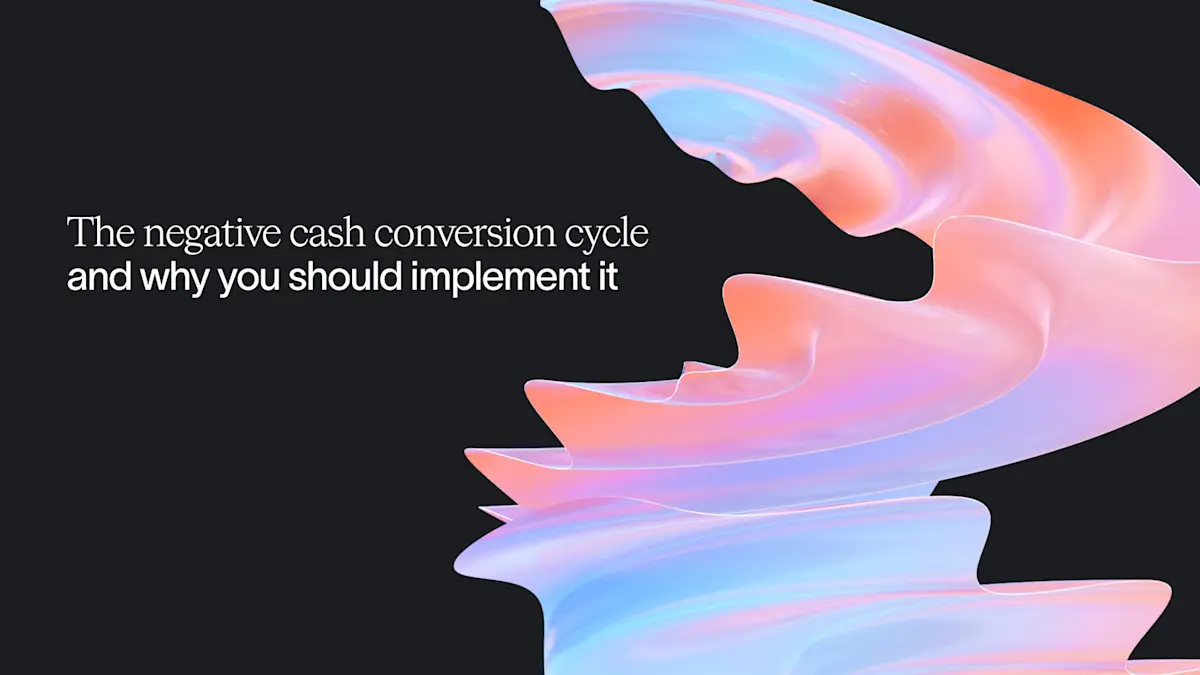The Value of Float: How to Unlock Capital to Scale Your Ecommerce Business
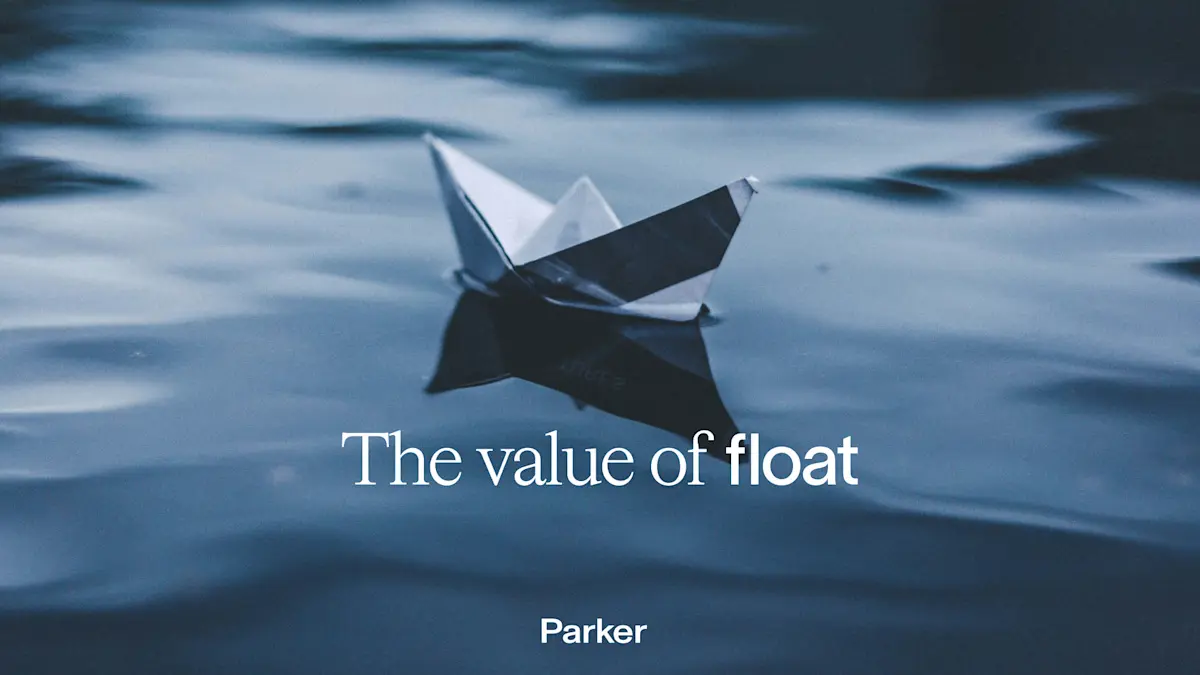
I've led sales at Parker for 3 years now. In that time, I've personally signed over half of our customer base, and had thousands of conversations with ecommerce founders and finance executives.
One of the biggest lessons I've learned is most operators glaze over the single most valuable thing Parker provides — optimizing cash flow and cash conversion cycles through float and rolling credit terms.³
What is float? The 30-day Statement.
There are two major issues with the typical 30-day statement.
Let’s look at an example.
Let’s say a brand launches a $500 per day ad campaign on Meta, using a standard credit card. By standard credit card, I mean a credit card built on a 30-day statement period, in which all 30 days of spend are due at the end of the statement period (unless you want to carry a balance and incur interest).
Most credit cards are built on this 30-day statement. This means you have 30 days of float on the transaction submitted on the first day of the month. What many people don’t realize, though, is that float decreases as you spend throughout the 30-day statement period.
- Issue #1 – sure, you have net-30 from the first day of the statement; however, your charges on the last day of the statement are due the next day. So, for an ecommerce company spending daily on inventory and ads, 30 day terms actually averages out to only 15 days of credit. Not very helpful.
- Issue #2 – all those daily charges accumulate into one big bill at the end of the month, resulting in a harsh cycle, in which you spend for 30 days, and then get hit with huge "maturity walls" — lump sum payments that suck up all your revenue at the end of each month.
For a cash-intensive business like ecommerce, typical credit cards present a self-fulfilling cashflow challenge.
Enter rolling terms: The ecommerce credit fix
At Parker, we've designed our credit products to maximize float, unlocking a huge working capital advantage for ecommerce brands to invest in growth, protect against cash crunches, and smooth out lumpy cash flows. Here's how.
With rolling terms,³ you get the entirety of your credit duration on every transaction. An easy way to think of this is each day equates to a daily statement, and every daily statement gets your full credit term.
Say you have 45 day terms.
- Any charges from January 1st are due February 14th.
- Charges from January 2nd are due February 15th.
- Charges from January 3rd are due February 16th
So on and so forth.
Whether you spend on day 1 or day 30, those purchases get the full 45 days. No averaging down, no maturity walls, no calendar crunch.
Looking at this client example — using a typical 30 day card, their biggest payment was a $375,000 maturity wall. Ouch!
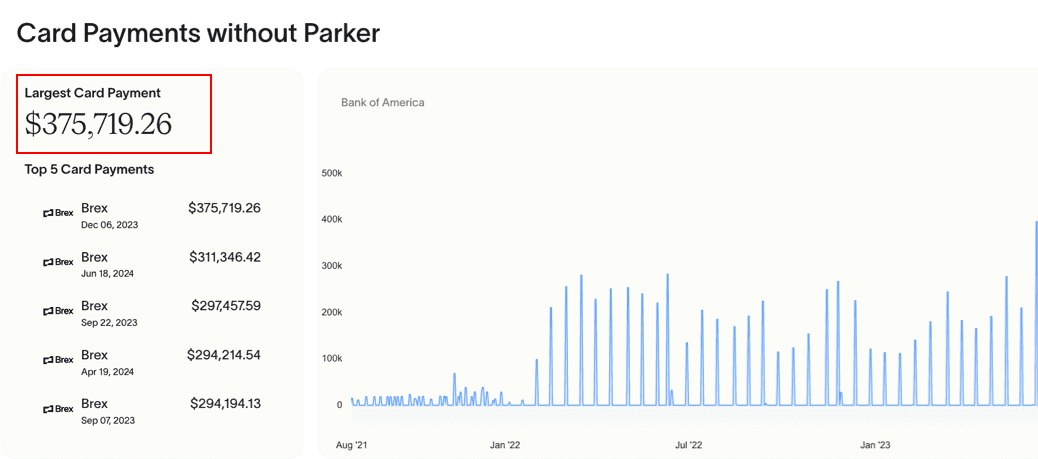
With 45-day rolling terms,³ this client's average credit duration jumps from 15 to 45 days, and their largest payment drops down to just $38,000.
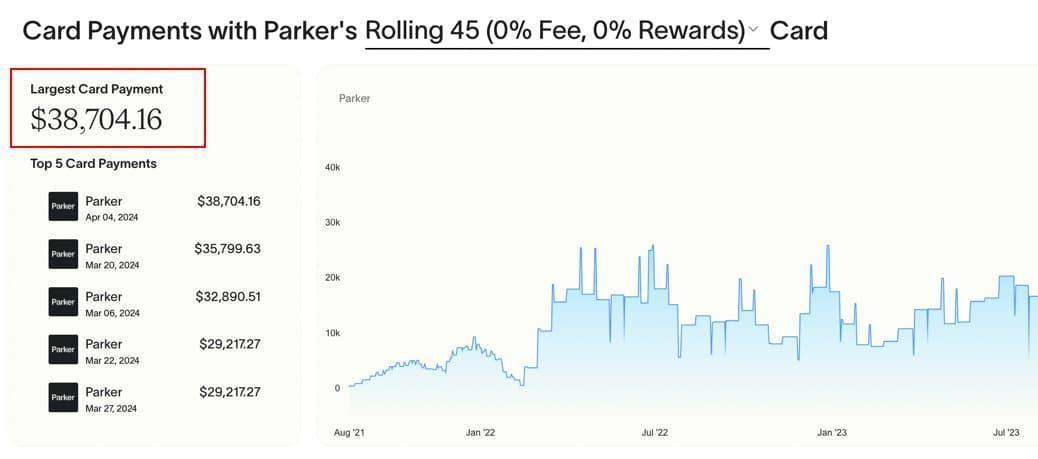
No games, no gimmicks, just a true net-45 on every single transaction.
But here's the real magic. Rolling terms³ don't just extend your cash flow… they expand it.
Let me explain.
Unlocking the "perma-float"
Most folks gravitate towards the longer duration part of our pitch. 45, 60, and 90 days of float sounds nice. But rolling terms³ provide value over and above just extending cash flow. With rolling terms,³ your revenue balance actually grows!
With rolling terms,³ you're always getting full duration on every swipe. Payments are just the small, incremental daily charges from X days ago (45 days in this example) rather than one big statement bill. So you never really pay down the full balance!
As you ramp up, you can build up a permanent float — a "perma-float." You're repaying small daily amounts and immediately putting that money back to work with new purchases. The cashflow cycle looks more like a smooth wave than a roller coaster.
The end result: you've unlocked a huge chunk of capital that was previously tied up in statement bills and maturity walls. I'm talking six, even seven figures of extra capital in many cases. And you've smoothed out your cash conversion cycle in the process.
Putting float to work for growth
So you have all this extra cashflow thanks to float. Now what? I see our clients put float to work in all sorts of creative ways:
- Investing in new marketing channels and inventory
- Negotiating better terms and pricing with suppliers
- Building up reserves to weather sales dips
- Avoiding dilutive equity rounds or expensive debt
At the end of the day, the name of the game in ecommerce is unit economics and cash flow cycle. Extending your payables with rolling terms boosts³ margins and improves cash flow in one fell swoop.
I can't think of any credit card rewards program that comes even close to matching the ROI of simply having an extra $500K+ in the bank.

The DTC founder’s secret weapon
Credit terms aren't sexy. I get that. There's a reason folks glaze over when I start evangelizing the magic of longer, rolling terms.³ But after hundreds of conversations with ecommerce founders, I've seen the light bulb moment enough times to know it's worth harping on.
Rolling terms³, float, perma-float, cash conversion cycle — these concepts might not roll off the tongue. But they are an absolute game-changer when understood and applied correctly. I truly believe it's a "secret weapon" for ecommerce brands.
If founders simply thought about credit underwriting the same way they optimize their marketing funnels, I'm certain we'd see even more hyper-growth DTC success stories. It doesn't matter how much you raise if your unit economics are upside down.
At Parker, our mission is to build the ultimate ecommerce financial stack and empower brands with the capital they need to grow. The expanded cash flow made possible by float is the foundation. If you're an ecommerce founder and want to see what hundreds of thousands in extra revenue could do for your business, let's chat — I'd love to show you how the float effect can unlock your growth.
Related Articles
Ready to Join the Financial Revolution?



